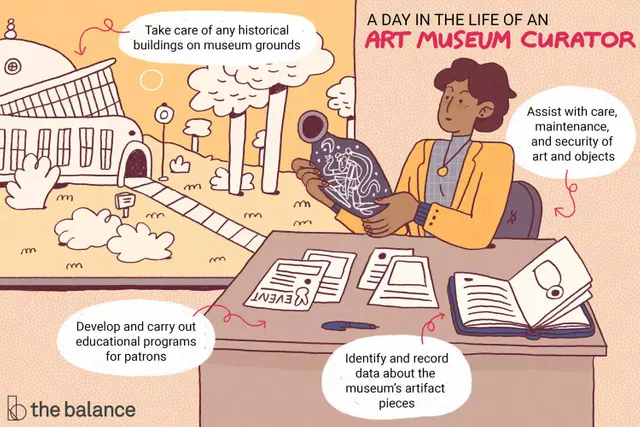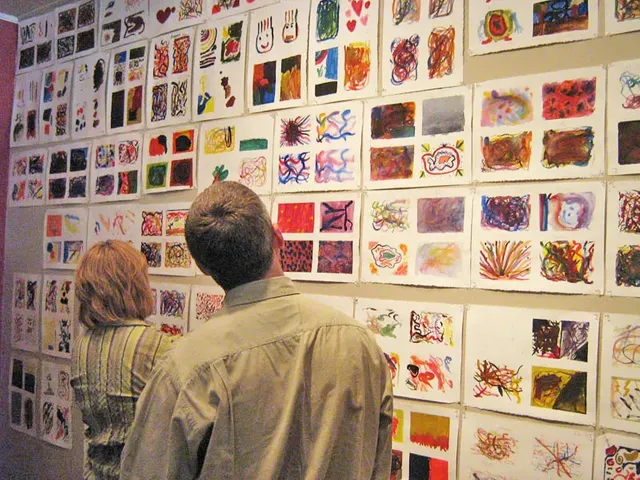How to become a museum curator

If you're wondering how to become a museum curator, it typically takes around five to 10 years to become one. This is because most museum curator positions operate at a managerial level, although some entry-level positions exist also. However, museum curator jobs are rewarding for those passionate about history and who want to combine it with their creative abilities. Here are some steps on how to become a museum curator:
- Consider your options
Museum curators typically spend around five years in education and five years gaining experience. Since you need to put in a lot of work to become a museum curator, it's important to consider whether the profession is right for you. You don't want to spend time gaining experience only to decide your passion lies elsewhere. Even if you decide to become a museum curator, there are several paths you can take. For example, you could work in:

A Museum or GALLERY
historical sites or buildings
community centres
a tourist attraction
an aquarium
nature centres
government
education
botanical gardens
You don't need to decide on these locational factors straight away, but having a general idea could help dictate your career path or which skills you need to perfect.
Get an undergraduate degree
To become a museum curator, you need to have an undergraduate degree in a related field. The degree that you choose may differ according to what you want to specialise in. For example, a degree in fine art is good if you plan to work in an art setting as it gives you practical skills and an understanding of art history. Some universities offer internships or placement opportunities for students wanting to develop their creative assets. These opportunities offer you the chance to connect with professionals in the field who could assist you with advice or graduate jobs.Get a postgraduate degree
Since a museum curator usually oversees administrative and business duties, a master's degree is usually necessary. Postgraduate studies build on undergraduate-level education by giving you practical experience. Those who consider a master's in fine arts have the opportunity to show their work at galleries or manage exhibitions, which are experiences that look good on a CV.
Alternatively, you can get a master's degree in business studies if you prefer to enhance your administrative qualities. These include fundraising and marketing. Postgraduate studies encourage extensive research, which applies to the museum curator role. As a museum curator, you may contribute to your academic field through conferences and journal articles. Therefore, research projects can facilitate this ability and give you a chance to specialise in a certain topic within a broad academic field.
- Develop your skills
Museum curators have a broad skill set since their daily duties are diverse. You develop your skills throughout your education and experience. Here are some skills and characteristics which are useful to museum curators:
Interpersonal skills: Museum curators liaise with diverse people regularly, including administrators, the public and trustees. They require the ability to tailor their communications according to their audience to facilitate positive experiences.
Creative skills: The main responsibility of museum curators is to create aesthetically and academically pleasing exhibition material. Therefore, they need proficient technical art skills and a flair for innovation.
Organisational skills: Since museum curators oversee various functions, they need to achieve a good balance between public relations, administration, research and creation. This requires a methodical work approach.
Software proficiency: To categorise collections and retain important information, museum curators need to understand software tools, including databases, spreadsheets, and archives.
Related: What Are Organisational Skills? (Types and Examples)
- Gain experience
Take advantage of internship or placement opportunities that allow you to develop real-world experience. Certain skills are specific to the museum curator role that you can only develop with work experiences, such as restoration techniques and routine inspections. Entry-level positions are substantial, and you can seek roles in a variety of fields. Seek out administrative or managerial positions in the following fields:
art
science
philanthropy
philosophy
history
English literature
If you're struggling to find a paid opportunity, some museums offer volunteer roles when running special exhibitions or research projects. These opportunities are just as valuable as paid experiences and prove your determination and willingness to excel in a museum curator career. You can gain experience by publishing articles, attending academic conferences or conducting research on behalf of an institution. Experience is also important for networking purposes. You can learn more about how other museum curator's achieved their career goals and foster valuable connections, which could open you up to future opportunities.
Related: What is an art curator and what do they do on a daily basis?
- Get hired
You can apply to museum curator jobs when you've achieved your education and experience requirements. Job websites are useful in compiling a list of related jobs or positions in your local area. It's important that you have a CV ready to present to recruiters and a cover letter that demonstrates relevant skills in a real-world application.
The STAR method is a good structure to use when writing your cover letter. Make sure to use keywords from the job description throughout your CV and cover letter. This shows employers that you understand the brief and can apply it to your experiences.
Related: How To Use the STAR Interview Technique in Competency-Based Interviews
What is a museum curator?
Otherwise known as a gallery curator, a museum curator is a creative professional who manages historical collections and artefacts. They are responsible for the care of historical items, and it's their duty to display them in a pleasing manner for guests and visitors. They manage several types of items, including works of art, scientific documents and manuscripts. Some museum curators now oversee digital collections, too, and it's their job to develop and establish digital assets for other scholars and scientists to advance knowledge. A museum creator's ultimate priority is to educate the public through programmes, fundraising and successful marketing.
Related: Best Practices To Boost Your Creative Thinking Skills
What does a museum curator do?
A museum curator's role varies according to the size of the museum or organisation they work in. For example, in large museums, there are usually multiple museum curators that have different responsibilities. Alternatively, a curator who operates in a small museum or on a volunteer basis may oversee some general tasks, too, such as taking care of items or handling acquisitions. The general duties of a museum curator include:
record and catalogue acquisitions from the general public or scholarly institutions
determine exhibition budgets and oversee the training and management of employees at these events
plan and organise exhibitions
research objects and collections to discover their histories or relevance
take care of the design and installation of new collections or exhibits
write bids and negotiate item loans
form relationships with community stakeholders for fundraising opportunities
create workshops, lectures and other activities for upcoming exhibitions or collections
liaise with administrators, visitors and artists to get feedback and improve museum installations
choose which objects to include in a display and provide adequate packing for items that need transporting
deal with public enquiries, as well as management boards, trustees, council members and governors to secure funding and network with other historical institutions